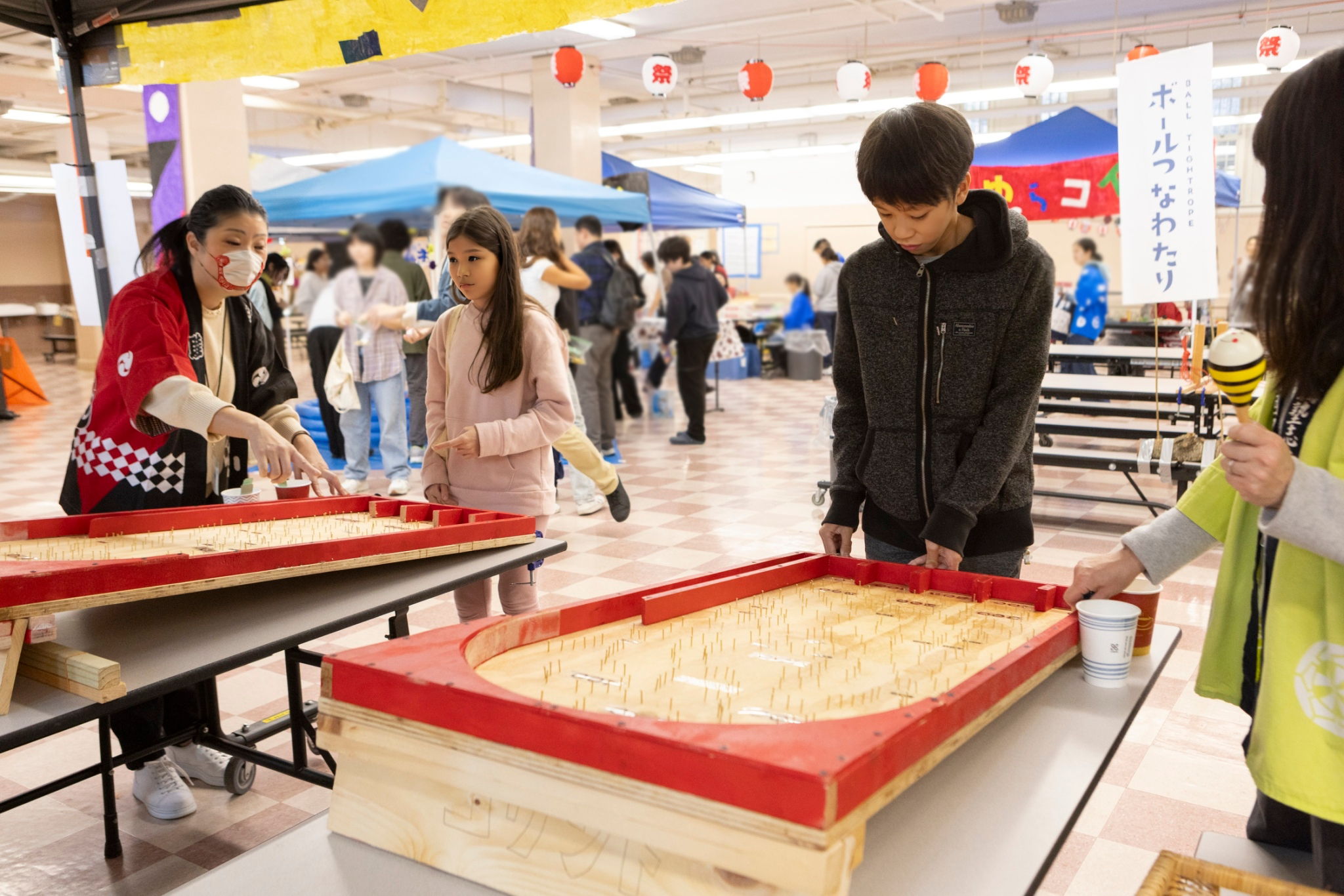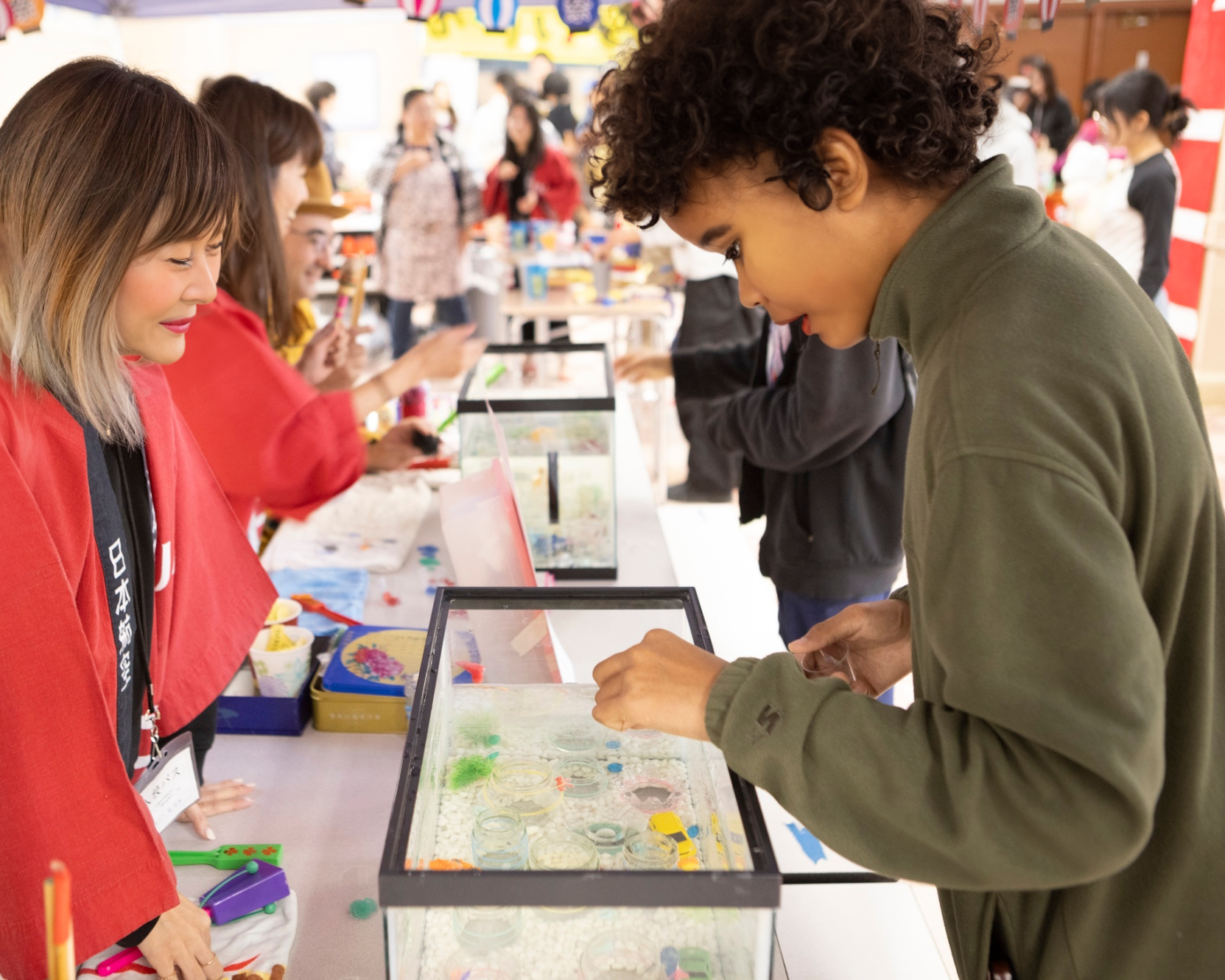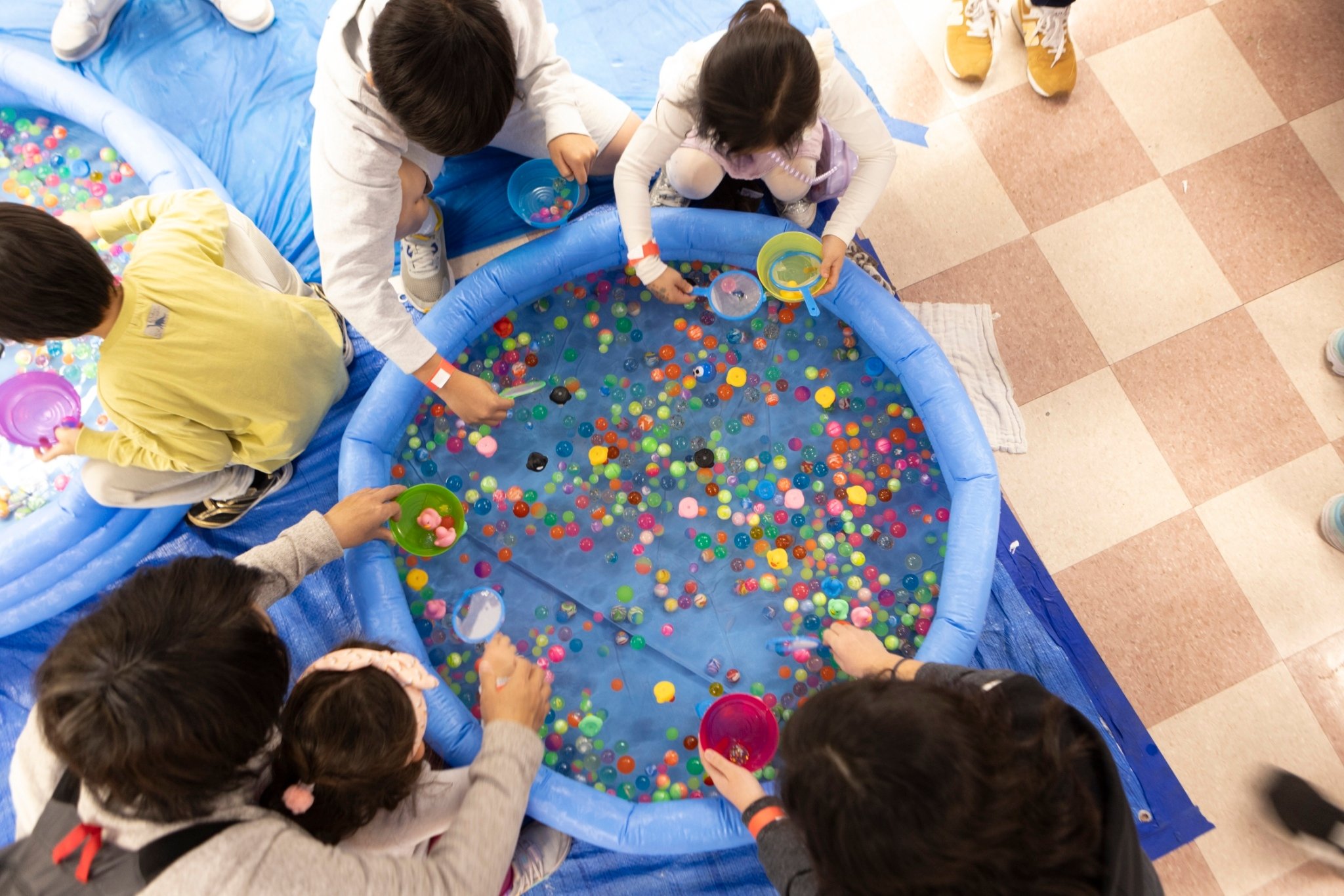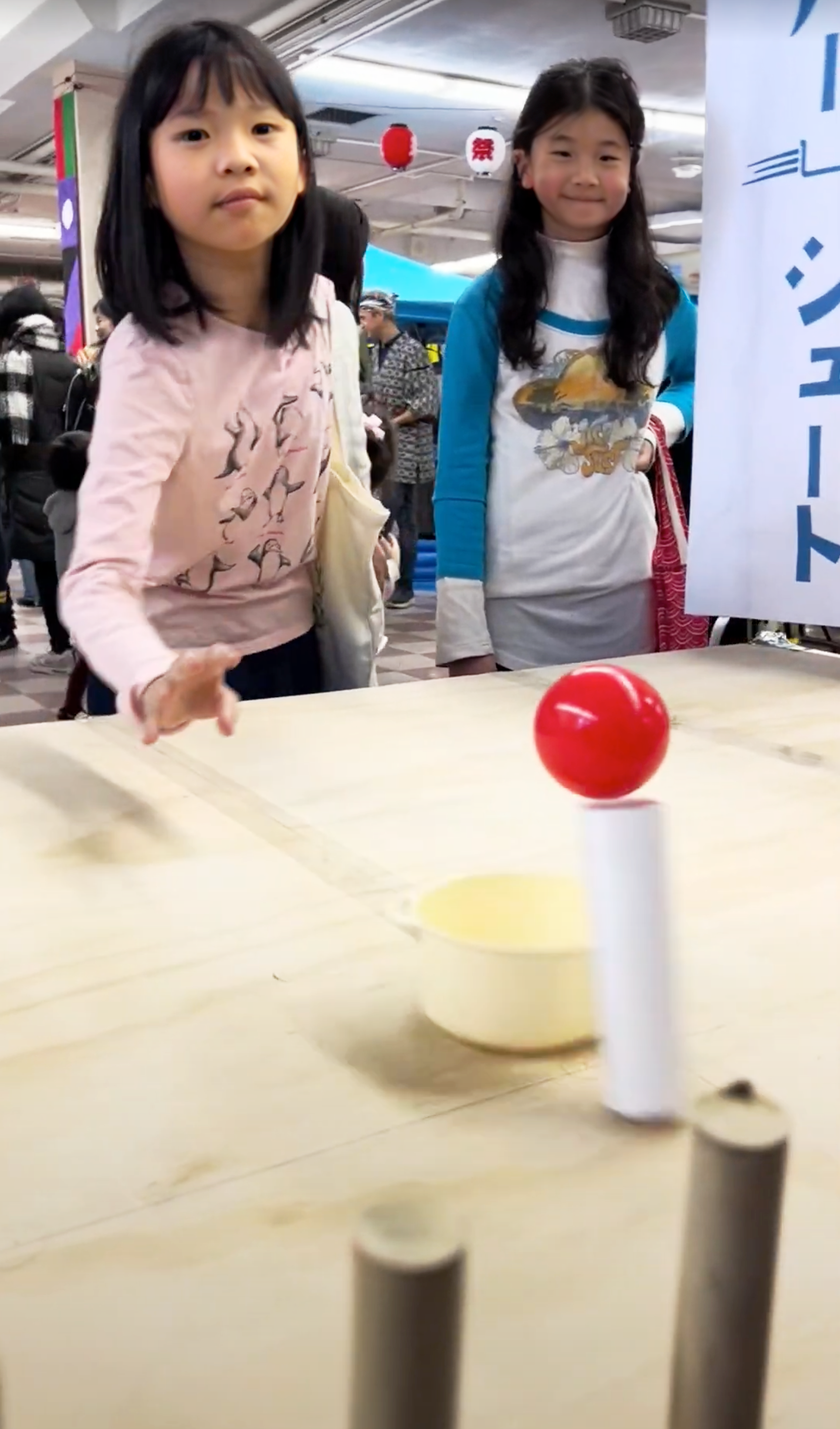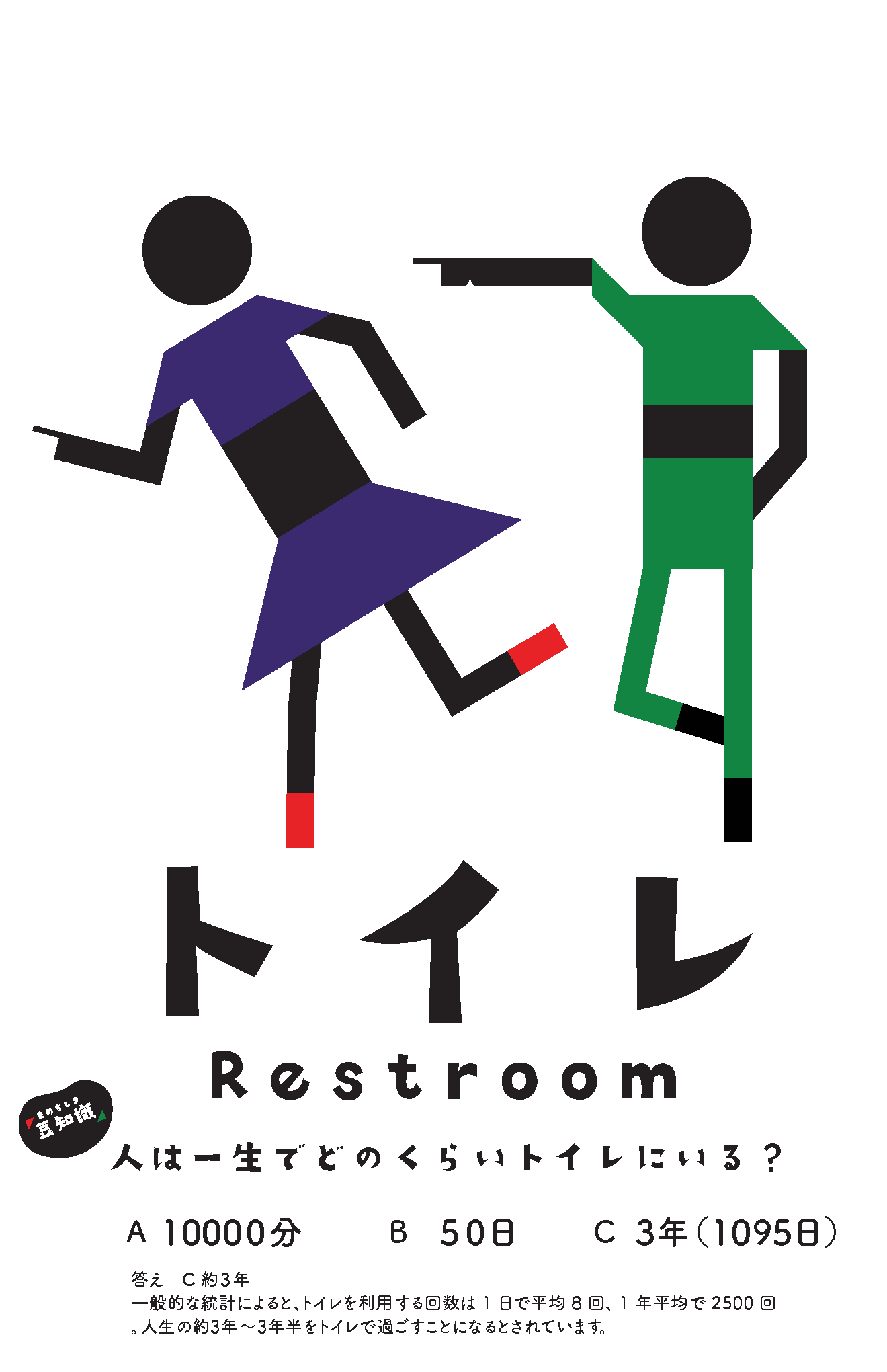Case Study
Festival Design / Physical Game Design
Design & Management for a fall festival for Japanese schools in New York. I worked on producing an entire festival, designing physical interactive games, developing festival branding, and managing a project with 100+ volunteers.
To respect and protect individuals' privacy, all faces in the photos have been either replaced with generative AI or blurred.
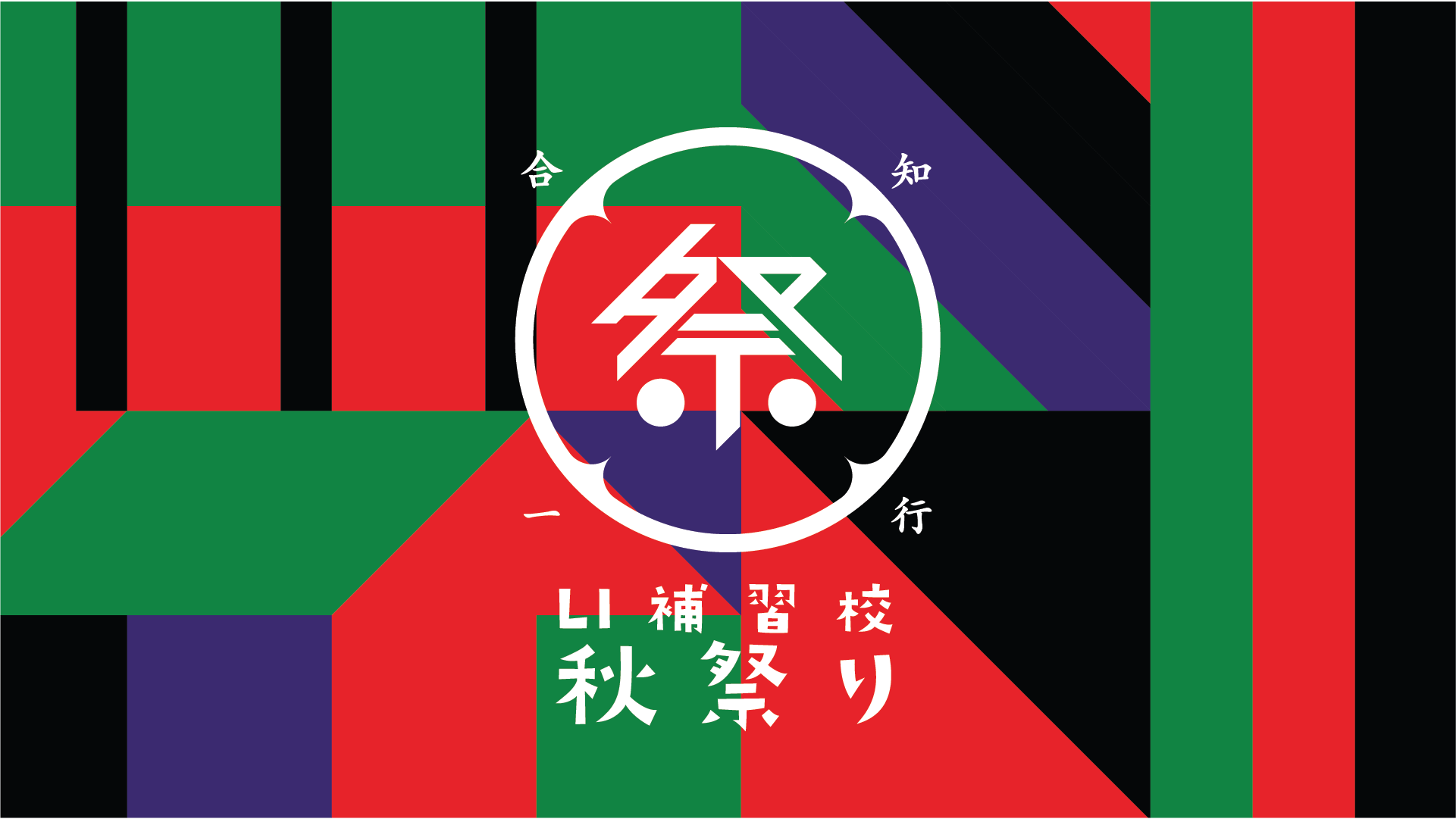
As chairperson, I spearheaded the annual autumn festival at the New York Japanese Saturday School from 2022 to 2024. Following the disruptions caused by COVID-19, we completely redesigned the festival’s format in 2022 to enhance the attendee experience by expanding the physical game area and enriching the opportunities to shop for Japanese items. We aimed to preserve and amplify the festival’s cultural and community engagement.
Festival Branding
Existing Graphic Patterns (2023): The previous iterations of the Autumn Festival's branding were built around vibrant, original graphic patterns that captured the seasonal essence. However, they lacked a unifying emblem that could encapsulate the deeper spirit of the festival.
Project Work Explanation: I developed a comprehensive brand identity that built upon the existing graphic patterns, creating an emblematic logo mark that embodies the festival's spirit and aligns with the school’s educational philosophy of "知行合一" (Chi-Kou-Gou-Itsu) — the unity of knowledge and action. The design featured the character "祭" (meaning "festival" in Japanese), housed within a structured form that seamlessly integrated the concept of "知行合一," merging tradition and modernity into one cohesive brand mark.
Context
What is this about?
As the chairperson, I directed the annual autumn festival at a Japanese Weekend School in 2022 and 2023. The festival's format was completely redesigned post-COVID in 2022, with a renewed focus on enhancing the festival game experience for generating revenue as fundraising.
My Role
Event Production
Experience Design
Game Design
Creative Direction
Branding
Team
Team Project Oversight
Shopping Area in-charge
Game Designer & Builder
Support Staff (110 people)
Deliverables
Festival Concept Development
Experience Design
Festival Promotion Design
Game Concept Development
Game building
Creative direction
Festival Branding
Banner and Signage Design
Team management budget
Project management
Impact
3X Revenue
Satisfaction Score: perfect 5 out of 5.
The festival achieved its goal of providing a fantastic day-long experience that was both fun and financially successful.
Booth Design
Games
Flying Chicken
This game was a reinvention of the traditional shooting game, substituting cork guns with rubber chickens launched at targets representing animated dark heroes. The targets were adjusted for difficulty based on their point value. This game was highly popular and achieved the educational goals of improving finger strength for launching, strategic target selection, and enhancing predictive skills and adventurous spirit.
Korinto Game
Inspired by manual pinball machines from the Showa era (1926-1989), this game involved launching marbles with a spring and scoring points based on where they landed. The game boards were crafted from scratch using wood and designed with Adobe Illustrator for nail placement, making it another crowd favorite.
Educational benefits included improved control over force application, spatial recognition, and arithmetic skills through scoring.
Guru-guru Target
Roundabout Target: This game involved throwing Velcro-covered ping pong balls at a large spinning disc covered with felt and designed with graphic patterns.
The educational focus was enhancing hand-eye coordination, spatial timing, and the precision and concentration needed to hit small targets.
Swinging Coin Drop
(ゆらゆらコイン) In the Swinging Coin Drop game, players drop coins into a water-filled tank where bowls and dishes are pre-submerged. The challenge is for players to predict the trajectory of the coins as they fall through the air and into the water, aiming to land them inside the vessels.
This game enhances spatial recognition skills as players estimate the coin drop, boosts concentration as they target the swaying containers in the water, and develops strategic thinking by choosing the best possible dish to maximize their score.
Superball Sukui
This game involves scooping super balls with a fragile paper net, which easily tears when wet. Players must skillfully navigate the paper net through the water, carefully scooping balls without breaking the net.
This activity enhances fine motor skills through delicate hand movements, improves judgment as players predict the movement of the balls to scoop effectively, and boosts sustained concentration to avoid tearing the poi while engaging in the game.
Fishing Master
釣りマスター: Players use fishing rods to catch paper fish and octopuses with varying loop difficulties, enhancing dexterity, strategic thinking, and concentration under time constraints.
Kata-Nuki
カタヌキ or 型抜き: literally die-cutting, is an activity common at Japanese festivals in which a colored mold of candy made of wheat flour, starch, or sugar is carved using a needle or toothpick in the shape of an animal, star, umbrella, etc. Those who can skillfully carve the mold receive a prize.
Shopping like in Japan
This is an experience where children are given the opportunity to shop independently, similar to how elementary and preschool students in Japan may go shopping or run errands with cash in hand. In this cultural immersion, children navigate a selection of toys, snacks, traditional confectionery, and stationery items, mostly sourced from Japan, managing their money to make purchases on their own.
Ball Tightrope Walking
ボール綱渡り: A game where players manipulate a rope to guide a ball across and drop it into cups, focusing on hand coordination, timing, and visual recognition.
Pin Pong Pon
It is a game where participants use a catapult to launch ping pong balls toward a range of cups arranged at varying distances. Each cup presents a different level of challenge, and the objective is to land the balls in the cups to score points. The varying difficulty of the cups adds a competitive twist to the game.
Tupperware Shooting
タッパーシューティング: In this game, players slide a tapper to knock a ball off a paper cylinder and catch it within the tapper itself. It trains players in fine-tuning the force of their slide, aiming accurately to topple the cylinder, and strategically planning their shots to maximize their score based on ball colors and point values.
Mini Golf
This mini-golf setup challenges players with precision putting skills. Participants enhance their fine motor control, develop strategic thinking by reading the terrain to plan the best swings and improve concentration and persistence through repetitive practice.
Toilet Sign Design
All toilet signs reflected the festival’s vibrant branding. Each sign was uniquely designed with elements from the main graphic patterns, featuring lively illustrations of figures in motion—jumping or dancing—to guide attendees clearly and add to the festive atmosphere. This thoughtful design approach made even functional signs visually engaging and easy to navigate.
Additionally, I included fun trivia about toilets on each sign with interesting and humorous facts.
Operation Manual Design on Notion Wiki
As the operational backbone, We rallied the majority of the parents to serve as volunteers, guiding them through tasks such as crafting banners and managing festival activities. The key to orchestrating this large-scale volunteer effort was the development of a detailed Festival Operation Manual.
This indispensable tool was pivotal in streamlining festival operations, allowing over a hundred volunteers to perform their roles efficiently and contribute to a seamless festival experience.





















